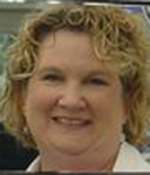

Reaction to Real Action – Ideas for Creating Engaging Online Learning Activities |
Listen and learn : Panel
Dr. Jennifer Courduff Dr. Samantha Fecich Dr. Peter Hessling Dr. Jean Kiekel Dr. Susan Poyo Dr. Shelly Vohra
Educators have been thrust into the world of online teaching and learning, experiencing challenges they have never faced before. The ISTE TEN leadership team will showcase evidence-based teaching strategies, tips and tools to design inclusive, accessible and engaging learning experiences that are applicable in online and face-to-face classrooms.
| Audience: | Teachers, Teacher education/higher ed faculty, Technology coordinators/facilitators |
| Skill level: | Beginner |
| Attendee devices: | Devices required |
| Attendee device specification: | Smartphone: Android, iOS, Windows Laptop: Chromebook, Mac, PC Tablet: Android, iOS, Windows |
| Topic: | Professional learning |
| ISTE Standards: | For Educators: Learner
|
| Additional detail: | ISTE author presentation |
The purpose of this presentation is to share research and experience-based ideas for engaging students in an online environment. Due to emergency online teaching measures, we've all had to "react." This presentation and discussion is about "real action." As educators gain an awareness of available technologies and processes within their own schools and districts, they leverage the contextual knowledge (Mishra, 2019) necessary for sustainable change.
Takeaways will include strategies for course organization, discussion boards, communicating with students, collaboration, peer teaching, virtual stations, a digital media choice board for students and teachers, and many other ideas, some of which will arise from the audience. All presenters have been engaged successfully in online instruction, including meeting national Quality Matters standards for an online course.
Participants at this presentation will be able to:
Knowledgeably choose ways to engage students online from multiple strategies and options.
Implement student choice as a strategy for engaging learners.
Construct meaningful collaborative assignments, using research-based tools and strategies.
Each panelist will address at least one form of critical engagement, providing examples based on research and experience-based strategies and tools:
Engaging through organization (12 minutes)
Engaging through connections (12 minutes)
Engaging through small group interaction (12 minutes)
Engaging through choice (12 minutes)
More questions and summing up of ideas (12 minutes)
Audience members will be able to interact with the panel as it presents via backchanneling tools. A moderator and panel members will field questions and interact with the audience as the presentation unfolds, both verbally and via the backchannel. Audience members will be able to suggest strategies and tools for creating engaging online learning activities. These suggestions will be included in an ongoing Wakelet that will be shared with attendees.
Arbaugh, J.B. (2008). Does the Community of Inquiry framework predict outcomes in online MBA courses? International Review of Research in Open and Distance Learning. 9(2), 21.
Arbaugh, J. B. and Hwang, A. (2006). Does “teaching presence” exist in online MBA courses? The Internet and Higher Education, (9)9-21.
Boettcher, J.V. & Conrad, R.-M. (2016). The online teaching survival guide (2nd ed.). Jossey-Bass.
Borup, J., Graham, C. R., West, R. E., Archambault, L., & Spring, K. J. (2020). Academic Communities of Engagement: an expansive lens for examining support structures in blended and online learning. Educational Technology Research and Development. https://doi.org/10.1007/s11423-020-09744-x
Bryans-Bongey, S. (2015). Meeting the holistic needs of k-12 online learners: Designing schools for the future. Internet Learning Journal, 4(2), 7-24.
Clarke, L.W., & Bartholomew, A. (2014). Digging beneath the surface: Analyzing the complexity of instructor’s participation in asynchronous discussion. Online Learning – Formerly The Journal of Asynchronous Learning Networks, 18(3).
Costa, Sr., J.P. (2013). Digital learning for all, now. Educational Digest, 78(8), 4-9.
Courduff, J., Lee, H., Cannaday, J. (2020). The impact of teaching, cognitive, and social presences in face-to-face, blended, and online masters’ courses. Journal of Digital Learning in Teacher Education, [in review].
Courduff, J. & Orton, S. (2020, September). AbleNet live webinar. They want me to do what? Thriving in a blended classroom. https://www.youtube.com/watch?v=hssKcLPW9-8
Darby, F. (2019). Small teaching online: Applying learning science in online classes (with J. M. Lang). Jossey-Bass.
Eaton, M. (2020). The Perfect Blend: A Practical Guide to Designing Student Centered Learning Experiences. International Society for Technology in Education. Arlington, Virginia.
Miron, G. & Urschel, J. (2012). Understanding and improving full-time virtual schools: A study of student characteristics, school finance, and school performance in schools operated by K-12 Inc. National Education Policy Center. Retrieved from: http://files.eric.ed.gov/fulltext/ED533960.pdf
Mishra, P. (2019). Considering Contextual Knowledge: The TPACK Diagram Gets an Upgrade, Journal of Digital Learning in Teacher Education, 35:2, 76-78, DOI: 10.1080/21532974.2019.1588611 https://doi.org/10.1080/21532974.2019.1588611
Nilson, L. B. & Goodson, L. A. (2018). Online teaching at its best: Merging instructional design with teaching and learning research. Jossey-Bass.
Rice, K. L. (2006). A comprehensive look at distance education in the K-12 context. Journal of Research on Technology in Education, 38(4), 425-448.
Rovai, A. (2002). Building a sense of community at a distance. The International Review of Research in Open and Distributed Learning. 3(1).
Szetzo, E. (2015). Community of inquiry as an instructional approach: What effects of teaching, social and cognitive presences are there in blended synchronous learning and teaching? Computers and Education, 81, 191-201.
Verschelden, C. (2017). Bandwidth recovery: Helping students reclaim cognitive resources lost to poverty, racism, and social marginalization.

Dr. Jennifer Courduff is a Professor of Education at Azusa Pacific University where she develops courses and teaches in the Master of Arts: Learning and Technology program. She is an active member of the International Society for Technology in Education (ISTE), and advocates for the needs of special education teachers in several professional learning communities. Her research and presentations focus on technology integration within inclusive learning environments and mobile learning.


I’ve been teaching at North Carolina State University for over 25 years, including almost 15 years of teaching online in some form or another. My Ph.D. is in Foundations of Education from UNC Chapel Hill, so I come at technology entirely from the humanities. My research is in the history of education, online teaching and collaboration, and pre-service teacher beliefs. I’ve been on the ISTE TEN leadership team for several years, usually participating heavily in the ISTE TEN Playground. Occasionally, I like to make short class videos using puppets.

Dr. Jean Kiekel received her PhD from Kansas State University in Curriculum and Instruction. She is currently the Field Placement Director at the University of St Thomas. She has developed an online master's program in Instructional Technology at the university which will be a track under the C&I Master's degree program at UST. Her current research interests include instructional technology in K-12 classrooms, online learning, and teacher induction,

